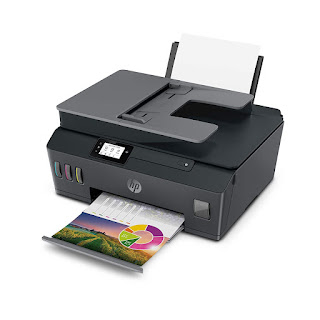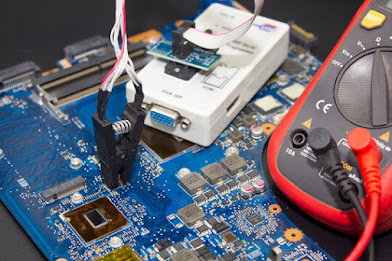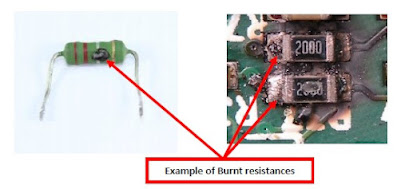What is DRAM (Dynamic RAM)? Examples, and Types of DRAM!!
Dynamic RAM is a kind of random access semiconductor memory that allows to keep store every bit of data into memory cell; it is usually containing of a tiny capacitor and a transistor, and both are totally based on MOS technology. So, now we are going to explain about what is DRAM (Dynamic Random Access Memory) and its examples; as well as different types of DRAM with ease. And, you will also fully get to know about Dynamic Random Access Memory without any hassle.
What is DRAM?
Definition – DRAM is another type of semiconductor memory, and it is designed specially to store data or program files which are needed by computer processors for performing their functions. Capacitor represents two possible values like as 0 and 1 that can be hold in a bit, and these values mark as charging and discharging.
Meaning – Full form of DRAM in computer industry is “Dynamic Random Access Memory“.
Types of DRAM (Dynamic RAM)
There are different types of DRAM, and below explained each one:
FPM DRAM
FPM DRAM stands for “Fast Page Mode DRAM”, and this DRAM has fast speed to other conventional DRAMs. FPM DRAM mostly used in the personal computers, but today it is not useful because it was only capable to support memory bus speed rate up to 66 MHz.
EDO DRAM
EDO DRAM stands for “Extended Data out DRAM”, and it had great performance than FPM DRAM but its speed was same FPM DRAM like as 66 MHz. It performs all processing on the FIFO principle “First Come First Out”. For example Intel Pentium
BEDO DRAM
BED DRAM stands for “Burst EDO DRAM”, and it provided the best performance compare to EDO DRAM. It was able to process 4 memory addresses in single burst so it could save three clock cycle processes. This task was completed with appending one on-chip address counter count the next address.
BEDO DRAM was used the page access cycle with attaching pipeline, and further it classified into two major parts such as –
- First part was capable to access all data from memory array to O/P state.
- Second part played major role to drive entire data buses from this latch on the specific logic level.
SDRAM
SDRAM stands for “Synchronous Dynamic Access Memory”, and it can access any element of data within 25 to 10 nano second. SDRAM are used in the DIMM (dual in-line memory module) along with 168 contacts.
In which, all data are stored with the help of capacitors using IC’s “Integrated Circuits”, and it is inserted into its specific slot, which is embedded on the motherboard.
ADRAM
Asynchronous DRAM is basic form of the DRAM, and Asynchronous DRAM is enabling to different connections like as power, address inputs, and bidirectional data lines. It controls the timing of all memory devices with asynchronously nature, and memory controller circuit arises the useful control signals to control timing.
RDRAM
RDRAM stands for “Rambus DRAM”, and it was designed by Rambus Inc; especially for graphic card. Now these days, modern RDRAM has higher data transfer rate to CPU memory bus because it includes several new speedup techniques such as synchronous memory interface system, caching enabled DRAM chips and faster signal timing. RDRAM consist 8 or 9 bits width data bus.
CDRAM
CDRAM stands for “Cache DRAM”, and it is designed specially with enabling on-chip cache memory. It works as high speed buffer to main Dynamic RAM.
SDR SDRAM
SDR SDRAM stands for “Single Data Rate synchronous DRAM”, and it can allow only one instruction and transfer one frame of data’s word on per clock cycle. It can bear clock frequency up to 100 to 133 MHz, and it performs all tasks on the 3.3 V voltages. These types of chips are designed with several data buses forms such as 4, 8, or 16 bits, and they are assembled into 168 pin DIMM package module. These chips are capable to read or write with 64 bit concurrently.
DDR SDRAM
DDR SDRAM stands for “Double Data Rate SDRAM”, and it provides the more bandwidth to all users. It is capable to accept the same commands at the once per cycle, and it can transfer double words of data with one clock cycle at a same time. Its clock rates are 133, 166 and 200 MH.
There are some family members of DDR SDRAM
DDR2 SDRAM
It is second member of DDR SDRAM family. It provides the double bus rate on per clock cycle rate, and it uses the different clock rates like as 200, 266, 333 or 400 MHz.
DDR3 SDRAM
It provides the double bandwidth and bus to DDR2 rate on single clock rate. DDR3 is capable to fetch 100-200 M per second, and its clock rate is 400–800 MHz.
DDR4 SDRAM
It has great performance to DDR3 due to use its modern signal processing, and it uses fewer power consumption (1.2 V) along with huge memory capacity. Its clock rate up to 1600MHz as well as enable 288 pin configurations.
DDR5 SDRAM
It enables the double bandwidth to DDR4 while reducing power consumption (1.1 V).
GDDR SDRAM
GDDR SDRAM stands for “Graphics Double Data Rate Synchronous Dynamic RAM”, and it is developed specially for graphics processing units (GPUs). GDDR provides the high definition environment for playing games to users. GDDR has own growing performance family similar to DDR SDRAM such as GDDR2 SDRAM, GDDR3 SDRAM, GDDR4 SDRAM, and GDDR5 SDRAM.
Examples of DRAM Packages
There are mainly three types of DRAM memory module packages like as:
- SIMM (Single In-line Memory Module)
- DIMM (Dual In-line Memory Module)
- RIMM (Rambus In-line Memory Module)
- SIMM (Single In-line Memory Module)
This memory package consist the eight or nine RAM chip, where eight is used in MAC and nine in the personal computer but 9th chip is reserved to parity checking. SIMM used the 32 bit bus width, and it was available in 30 or 72 pin modules.
DIMM (Dual In-line Memory Module)
Now these days, DIMM is used as memory modules because its performance is excellent to SIMM. In DIMM, pins are embedded on the both sides of this module. Some years ago, DIMM was supported 168 pin connectors with 64 bit data bus. But now DIMM works on the latest technology like as fourth generation double data rate (DDR4) SDRAM, and it contains the 288 pin connectors.
Some Common Types of DIMM
UDIMM (Unbuffered DIMM)
It is designed specially to use on desktop and laptops because its speed fast and cost effective but not stable.
FB-DIMM (Fully buffered DIMM)
These memory modules are used in large system such as servers and workstations, and it enables the error detection techniques for decreasing the soft errors and bugs.
RDIMM (Registered DIMM)
It is also called the “Buffer” memory, because it is used in the servers and large applications, where to need the more stability and robustness.
LR-DIMM (Load Reduced DIMM)
It is used for decreasing the overload on the main memory controller along with buffering (data and address).
SO-DIMM (Small outline DIMM)
It has small size compare to standard DIMM because these memory modules are used small size PCs such as laptops, PDA and notebooks, etc.
RIMM (Rambus In-line Memory Module)
This memory package is similar as a DIMM but it is known as RIMM because of their manufacture companies slot needed.
SO-RIMM (Small outline RIMM, SO-RIMM)
It is small version of RIMM memory module package.
Likely Asked Questions)
What is DRAM in computer?
Dynamic RAM is a kind of random access semiconductor memory that allows to keep store every bit of data into memory cell; it is usually containing of a tiny capacitor and a transistor, and both are totally based on MOS (Metal-Oxide-Semiconductor) technology.
Is DRAM used for main memory?
Yes! DRAM is mostly going to use as your computer’s main memory.
What is meant by dynamic random access memory?
Dynamic random access memory is special kind of semiconductor memory that is usually used for data needed by a computer system processor to function.
What are the examples of DRAM (Dynamic Random Access Memory)?
Through this article, already we have been explained above many examples of dynamic RAM; you can check them.
What are the different types of DRAM in computer architecture?
There are different types of DRAM like as FPM DRAM, EDO DRAM, BEDO DRAM, SDRAM, ADRAM, RDRAM, CDRAM, SDR SDRAM, and DDR SDRAM.






Comments
Post a Comment